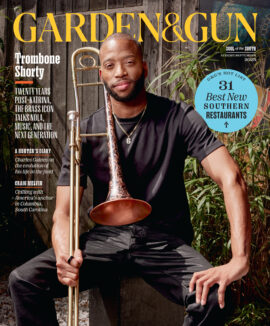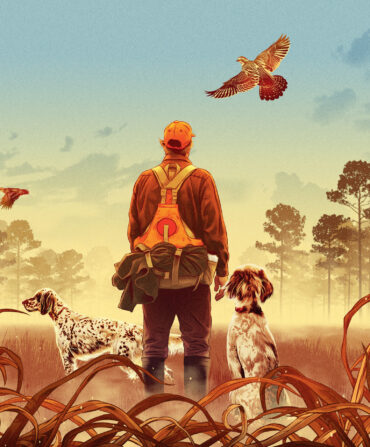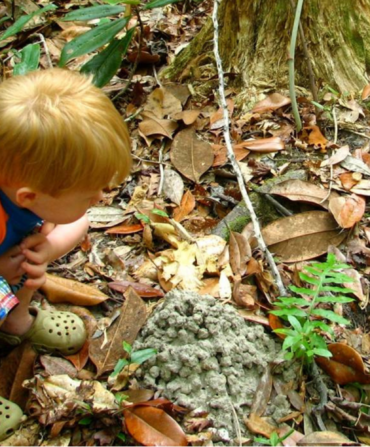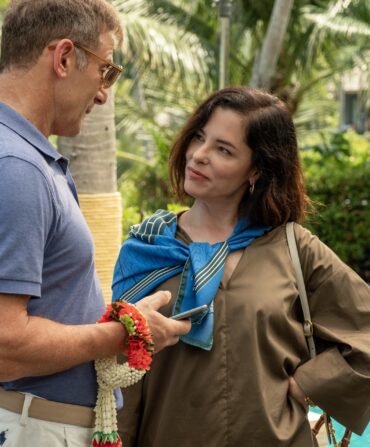Sporting
Recalling the Wonders of a Handmade Wingbone Call
Fifty years after receiving a handmade wingbone call, an outdoorsman remembers the legendary biologist Wayne Bailey, who gave voice to eastern wild turkeys

Illustration: Jill De Haan
You may or may not be impressed that I took third place in the junior division of the 1975 North Carolina wild turkey calling championships. I will tell you that it wasn’t easy standing on the stage of a darkened high school auditorium, at age fourteen, a city kid in a cavernous assembly room full of Carhartt coats, camouflage pants, and seed company ball caps. I stood alone on the stage as the contest judges called out my instructions in disembodied voices emanating from the gloom: “Gobble.” “Yelp.” “Putt.” I did my best with a box call, the sweat from my hands wetting the call’s wooden sides. I’d never been more nervous in my life, not even when I’d been forced to sing “The Little Drummer Boy” as a solo in church.

The reason for my discomfiture was simple: At the time, I had never seen a wild turkey. I’d never even heard one gobble, yelp, or putt. I’d learned what little I knew about turkey calling from endless rewinds of an instructional cassette tape played in my bedroom, while my brother yelled to my mother to make me stop. I was stunned when the results were announced; I’d taken the bronze medal, and I’ve been bragging about it for the half century since.
The fact that there were only three of us competing in the junior division—I don’t crow so much about that.
I don’t remember what the other fellows won, but my prizes were a plastic wood and fake bronze turkey trophy, which has since vanished, and a wingbone turkey call with the name Wayne Bailey—presumably the call maker—etched into the side. To me, it didn’t look like much more than a few bones stuck together with glue, but others in the auditorium practically lined up to see it. They would hold it in their hands as if it were an emerald necklace, and say things like, It’s one of his, yep. And Son, I hope you know what you have here. I didn’t, but suddenly my third-place trophy didn’t seem so much like a last-place prize, but a treasure I’d been gifted. Like I’d gotten away with something that I didn’t really deserve. Which, as it turns out, I had.
Made from the humerus, radius, and ulna of a wild turkey itself, glued together to form a single flute-shaped piece, a wingbone turkey call is as old-school as it gets; Native Americans were using them to fool toms and hens as early as 6500 BC. When the user sharply sucks air through the tip of the narrow radius, a lacework of rigid structures inside the bones slices and dices the passing breath. The sounds resonate in the hollows of the bone, now devoid of marrow, and resound in the trumpet-shaped bulge of what used to be the ball on the end of the humerus. There’s something inherently authentic in using a wingbone call to entice a turkey. Something poetic about giving voice and life to the lifeless.
I loved that call, even before I knew its full story. It called to me, as it were, in a peculiar way. It seemed an oddity, and I collected oddities, and displayed them on bookshelves in my childhood bedroom—strange bones I found in the woods, awful attempts at squirrel taxidermy, dried venom from a rattlesnake I’d killed and then milked postmortem. I knew of neither the term nor the concept at the time, but looking back, I understand that my boyhood bedroom was akin to the European Wunderkammer, or “cabinet of curiosities,” that was all the rage among the emerging intelligentsia of the Renaissance. Like my own assemblage of wonders, those collections showcased objects that felt meaningful, even if their true identities, and thus their true meanings, might have remained to be discovered. I hauled a bunch of that sort of stuff from boyhood bedroom to college dorm to squalid apartments and assorted rental houses. (Yet another reason that I may have been viewed as a bit of a curiosity myself.) At any point over the past fifty years, you could have challenged me to find that wingbone turkey call within two minutes, and I would have taken your money every time.
In the mid-nineties, I was interviewing an old biologist in North Carolina for a story about old biologists in North Carolina when my subject said: “I hope you’re going to talk to R. Wayne Bailey. He was one of the pioneers of wild turkey biology, and he might not be around much longer.”
The name struck me like a thunderbolt. It was a name I’d seen a million times, and the name those real turkey hunters in that auditorium had whispered in reverence. It was the name inscribed on my wingbone call. Twenty years had passed. I could hardly believe it. And R. Wayne Bailey lived less than two hours from my home in Raleigh.
The bird’s song sounded as faint as a leaf falling to the ground. I didn’t hear it so much as realize that I had just heard something, a raspy wrinkle in the mist. And then it was gone.
I glanced over at Wayne Bailey, a grin on my face, but he was as still as marble. All around us the first rays of dawn thawed the colors of an early spring morning in north-central North Carolina’s Caswell County. Blooming redbud and dogwood splattered the greening woods with lavender and cream blossoms. Mayapples blanketed the forest floor. New beech and oak leaves, tender green, shivered in a slight breeze.
Half an hour earlier, I’d followed Bailey and his battered shotgun up a steep, red-clay two-track trail crisscrossed with fox, rabbit, and raccoon prints. Tall enough to step over a three-strand barbed wire fence nearly flat-footed, Bailey was eighty-six years old at the time and surprisingly swift. I carefully hopped on shingles of moss growing in the middle of the road, trying to keep up with the old man and keep quiet. Both tasks proved difficult. Now we stood at one of Bailey’s favorite listening posts, a heavily timbered ridge with long views toward a creek bottom pasture where bellowing cattle milled about.
The turkey gobbled again. He was closer, and almost instantly a different gobbler cut him off short. Seconds later, a third bird joined the fray. There is no sound in the Southern woods to match a tom turkey’s gobble. To gobble, the turkeys must extend their necks out as straight as an axe handle, and let fly. Heard at a distance, a gobble is a muted, musical rattle. But at close range, the sound is desperate and percussive. Biologists believe that the opening notes of a turkey’s gobble—called the “attack”—snag the attention of other birds, while the trailing notes help other turkeys calculate the distance and direction of the gobbler. On a calm morning, a gobble can be heard a mile away.
But here’s the thing about eastern wild turkeys: Sometimes they act like wild animals, and on that morning, three wild turkeys within a couple hundred yards of one another decided they weren’t buying what one of the South’s greatest turkey hunters was selling. A few hours later, we limped out of the woods, turkey-less, and headed back to Bailey’s small house in the little town of Milton, population around 150. He drove his beat-up pickup like he stole it. Even though there was hardly anyone else on the road, it was one of the more terrifying rides I’d ever experienced.
Born in 1918 in Rock, West Virginia, Bailey signed on as a biologist with the state’s Conservation Commission in 1945. A few years later, he told me, he was tasked with trapping a lone male gobbler in Seneca State Forest. It was an early effort in what would become a half century of trapping wild turkeys in areas where they were common and transplanting them into areas around the country where they had disappeared, or nearly so. Bailey couldn’t have known then that such work would one day be lauded as one of the greatest conservation success stories of the modern era, and that he would play such a significant role in the comeback. For the moment, he was just trying to figure out how to get his hands on that gobbler.
It took weeks for him to lure the bird into the back corner of a picnic shelter with wheat and oats, but when Bailey tripped the drop net he’d fashioned from plumbing pipe, he knew he’d found his calling. By the time he retired in 1980 as the project leader for North Carolina’s turkey restoration effort, he’d assumed the mantle of “the godfather of modern wild turkey management.” He wrote more than a hundred scientific papers on the topic. He live-trapped hundreds of wild turkeys in West Virginia and North Carolina and shipped the first wild birds ever released in Ohio, Illinois, Massachusetts, and New Hampshire. He used drop nets and walk-in wire traps with trapdoors and spent long days in the blind. He baited turkeys with corn soaked in tranquilizers, and many was the night, he told me, that he shared his tiny house with doped-up turkeys. Some would come out of their comas earlier than planned, and that would have been a sight, watching Bailey chase them around the room with a burlap sack in his hands.
Back at his house in Milton, Bailey pulled out mementos of his life as a turkey hunter and career as a pioneer in the wild turkey restoration movement—old black-and-white photographs of turkeys caught in cannon nets, old push-button turkey calls, and stacks of ancient research papers. When I found a rare pause in the conversation, I reached into my hunting vest.
“I have something to show you,” I said, and I told him the story of that long-ago turkey calling contest, and the kid who knew he didn’t deserve what resulted. He listened with a grin, his face crinkled, stubby gray whiskers standing alert.
I held out the wingbone call. There is no telling how many calls Bailey had made in his lifetime of chasing turkeys, trapping turkeys, shipping turkeys, and sleeping with hungover turkeys in the next room. Scores, for sure. Hundreds, I’d suspect.
The bones in my call had yellowed with age, like a smoker’s teeth. The small black kisser button on the mouthpiece was chipped and worn. But the name etched into the trumpet end of the call was still as legible as the day he had made it. He brightened up as if it were a prodigal son, come home after a lifetime of journeys.
“My, my,” he said. “Yep, that’s an old one.” He scrounged around in a desk drawer, pulled out a Dremel tool, and closed a circle fifty years old. His hands were shaky, but the words came out as pretty as you please: MADE FOR EDDIE NICKENS BY. The inscription flowed nicely into the signature on the other side of the bone.
I can’t say for sure, but it’s a pretty good bet it was among the last handmade wing-bone calls he ever signed. Bailey passed away in 2007, a wise old bird, indeed.
To be honest, despite my sterling credentials on the competitive circuit, I’ve never been much of a turkey caller. I’ve yet to kill one lured in with Bailey’s signature wingbone. But I have had one close call. I keep the wingbone on a lanyard around my neck, where I can grab it to toss out a quick yelp or putt every so often when I’m moving through the woods from location to location, trying to figure out what the hell I would be doing if I knew what the hell I was doing in the turkey woods in the first place. On a hunt a few years ago, I was moving along a river ridge, yelping occasionally, when a gobbler stepped into the wood’s road and eyeballed me at thirty feet. Clearly he was looking for that sexy hen he’d been hearing for the last half hour, and he seemed as utterly surprised to see me as I was to see him. We gawked at each other for a millisecond, and then the bird vanished into the vernal ether. Gone for good. But he had come to the call, and I touched the talisman around my neck and remembered the old man. Fifty years later, that call still had turkeys inside. And I still had work to do.
In the turkey woods, you never really know what trophy you might bring home. A bird, maybe. But more likely, the prize is a memory of a certain slant of early sunlight through a scrollwork of beech leaves, or the stuttering tat-a-tat-tat-tat of a drumming yellow-bellied sapsucker. Nothing you could make a turkey sandwich from, but sustenance of a more lasting kind.
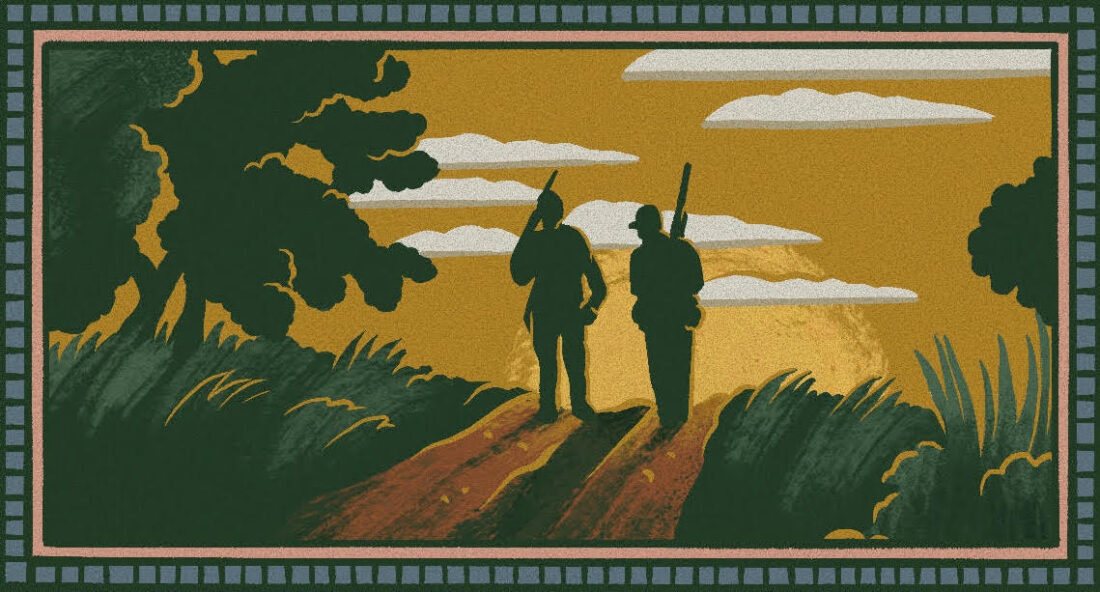
Illustration: Jill De Haan
That long-ago night after my hunt with Bailey, I returned the wingbone call to its place of honor on a bookshelf crowded with its brethren oddities: a small specimen jar of preserved glass eels I’d collected on a full-moon night of yore; a patch of rabbit fur; the dried-up body of a red newt that I’d kept as a boyhood pet until it escaped from its terrarium, only to be discovered under the bed years later.
The call was a curiosity still, but no longer a mystery. Now I knew its maker, and his story, and how our lives intertwined at distant moments within the still-unfolding saga of the eastern wild turkey’s magnificent return.

